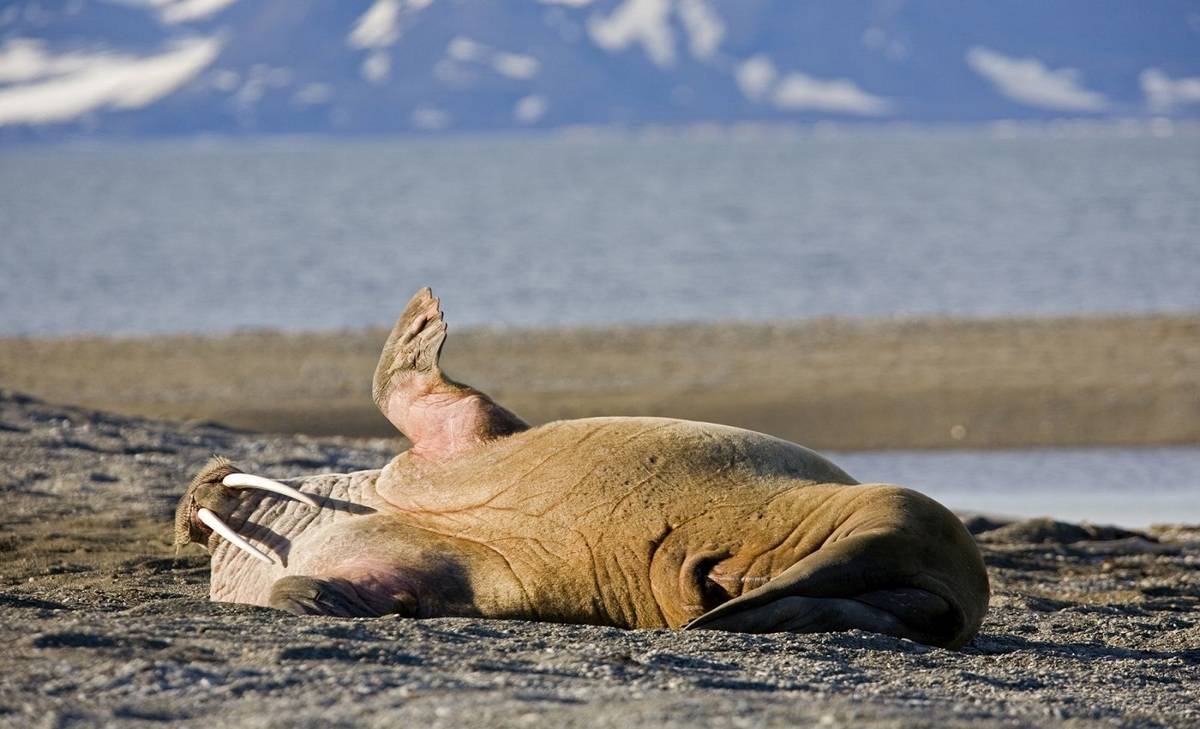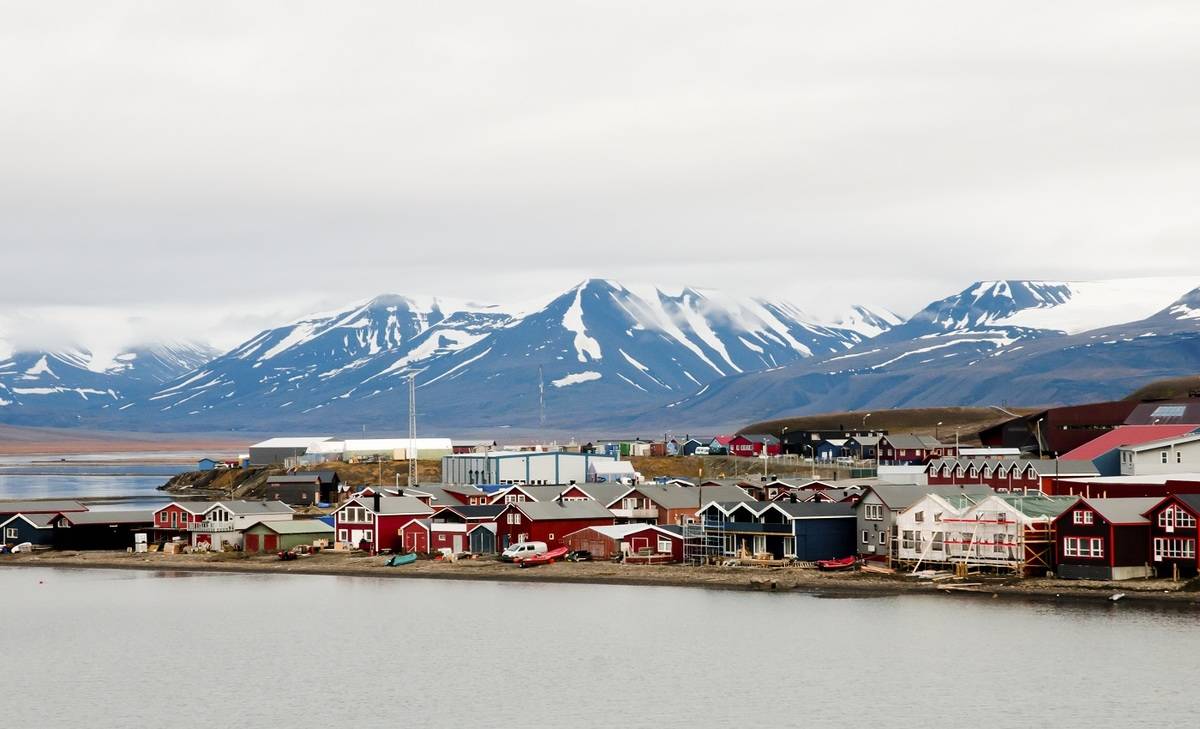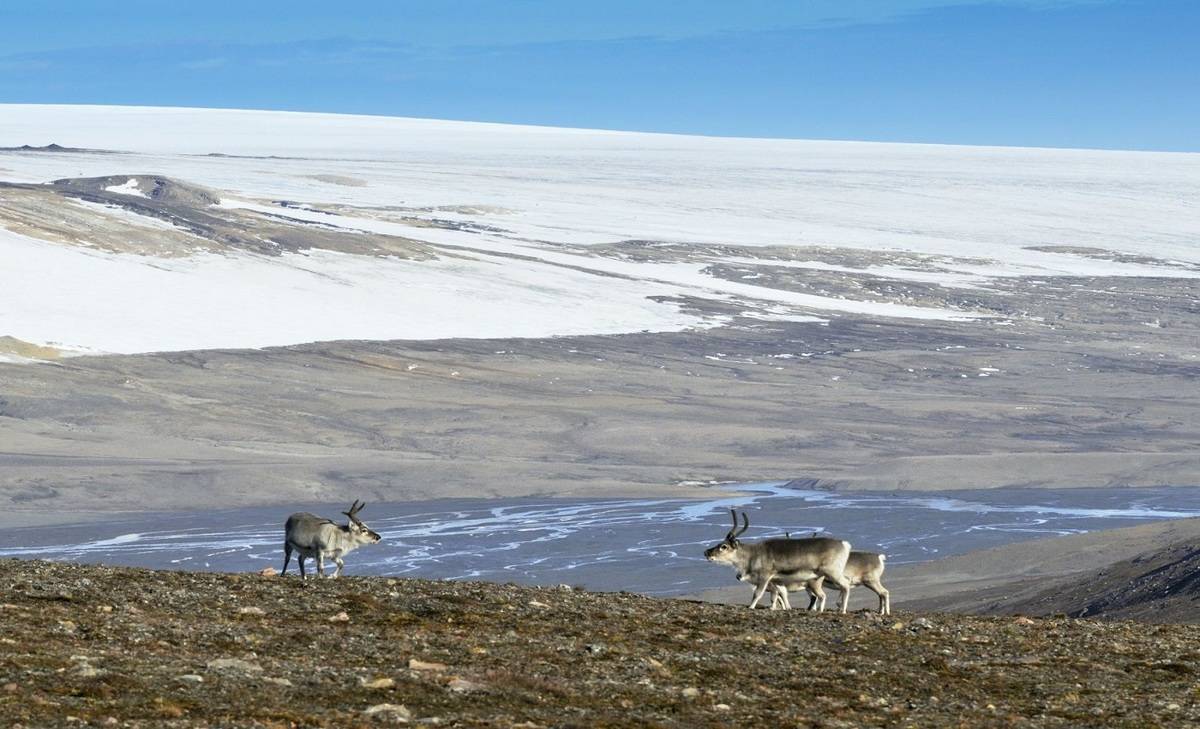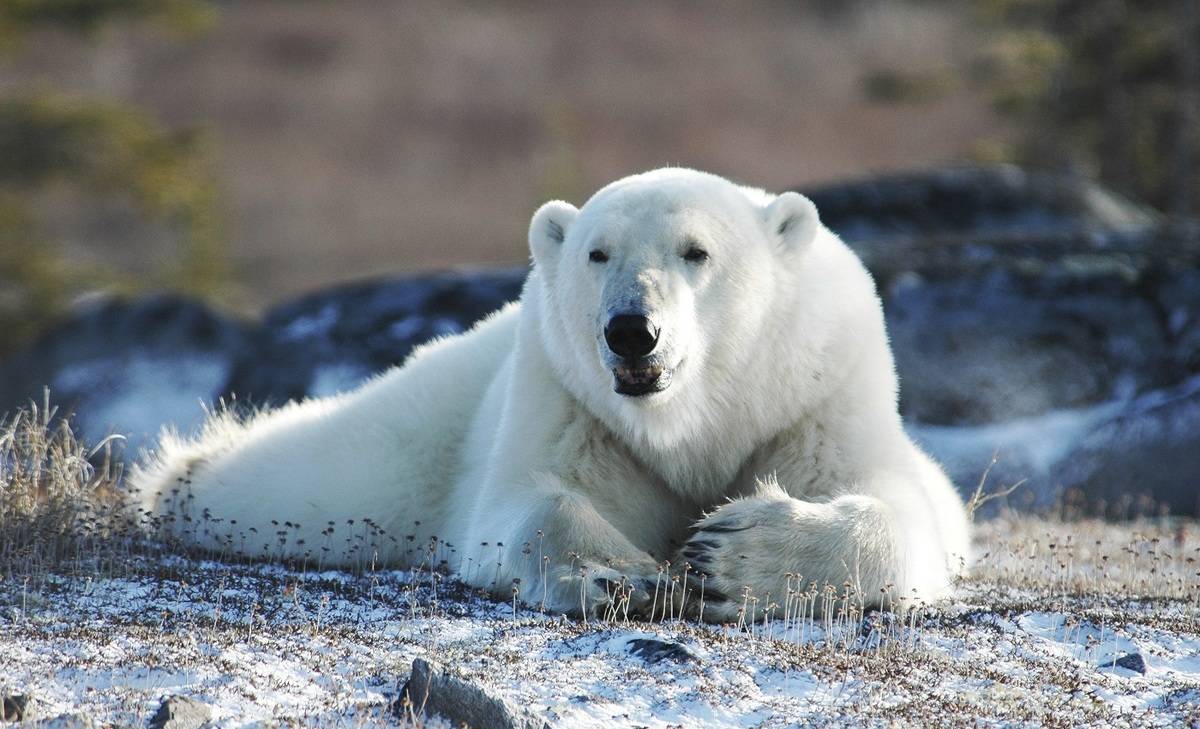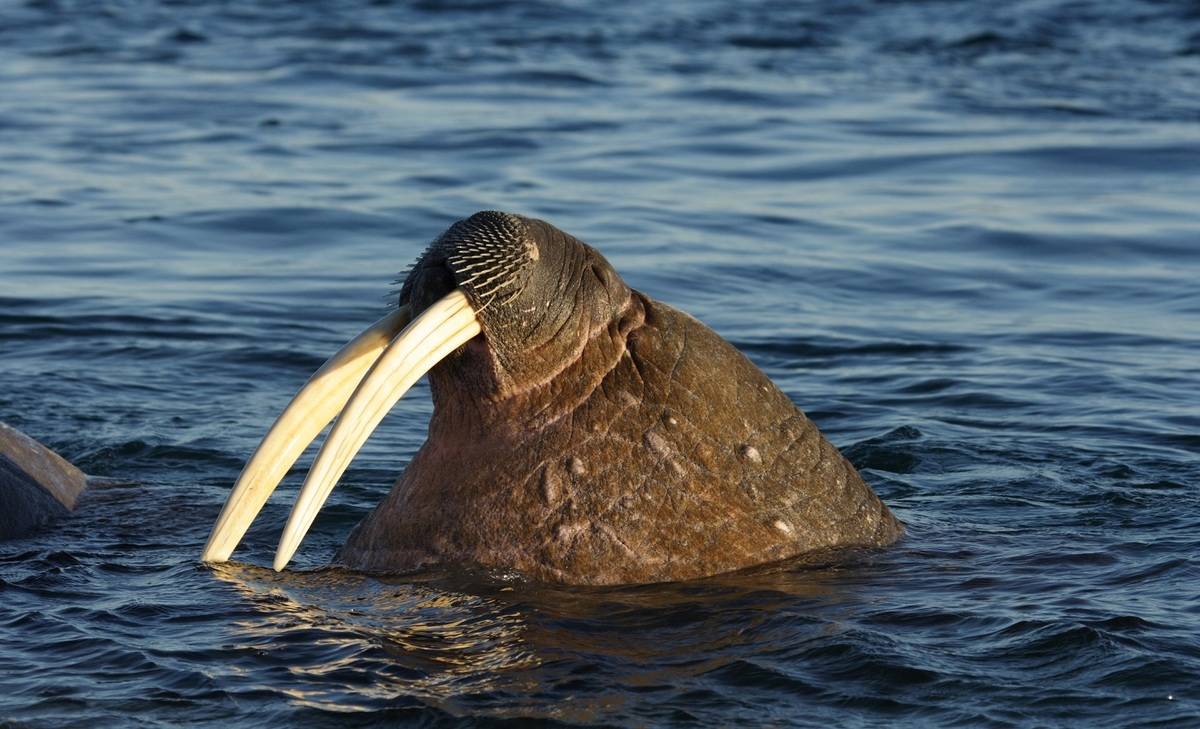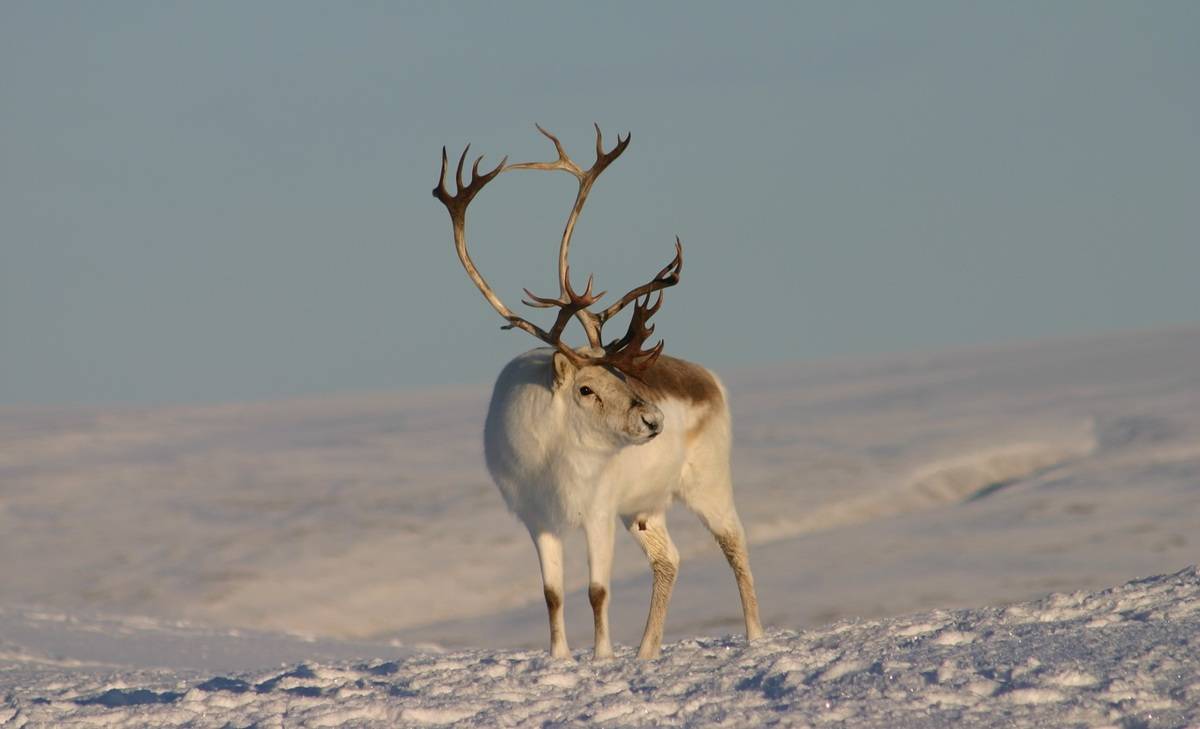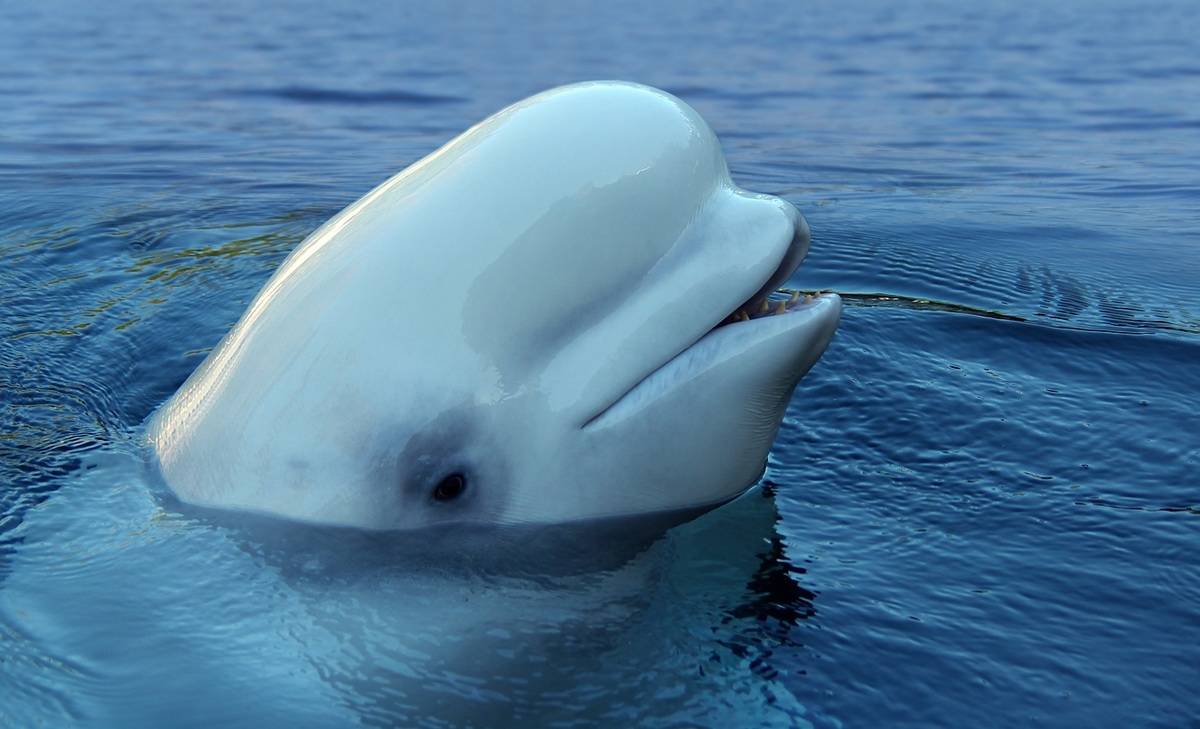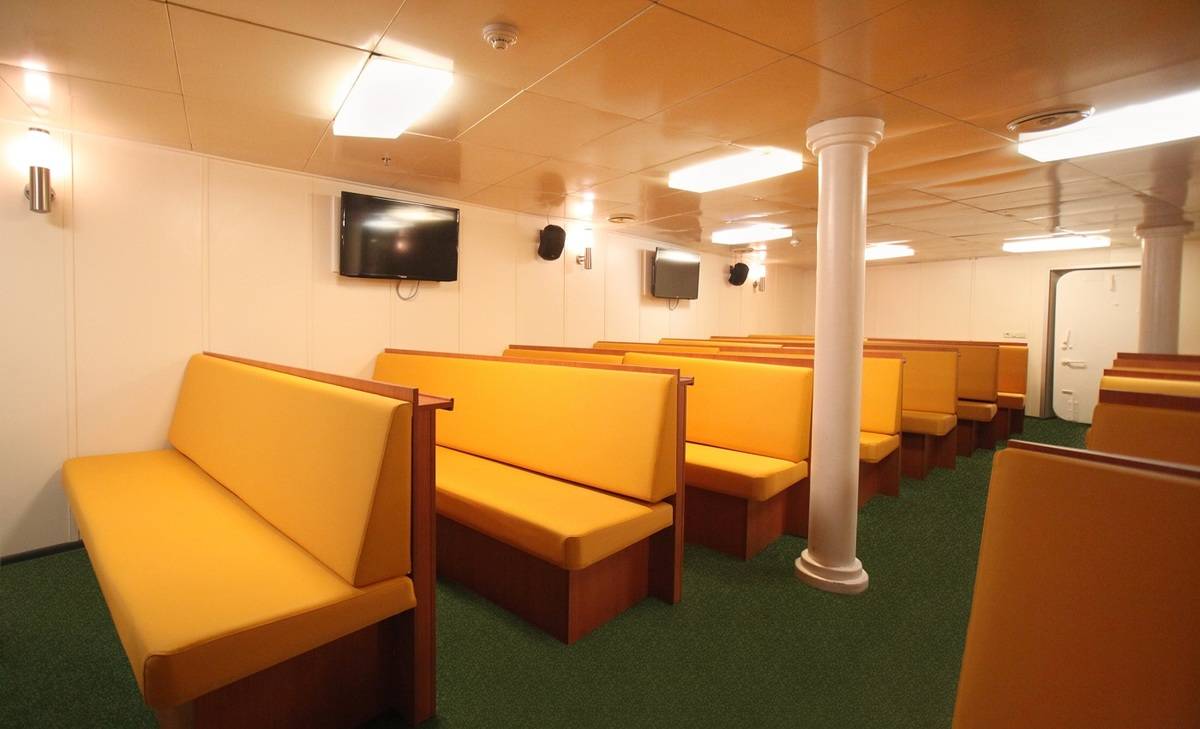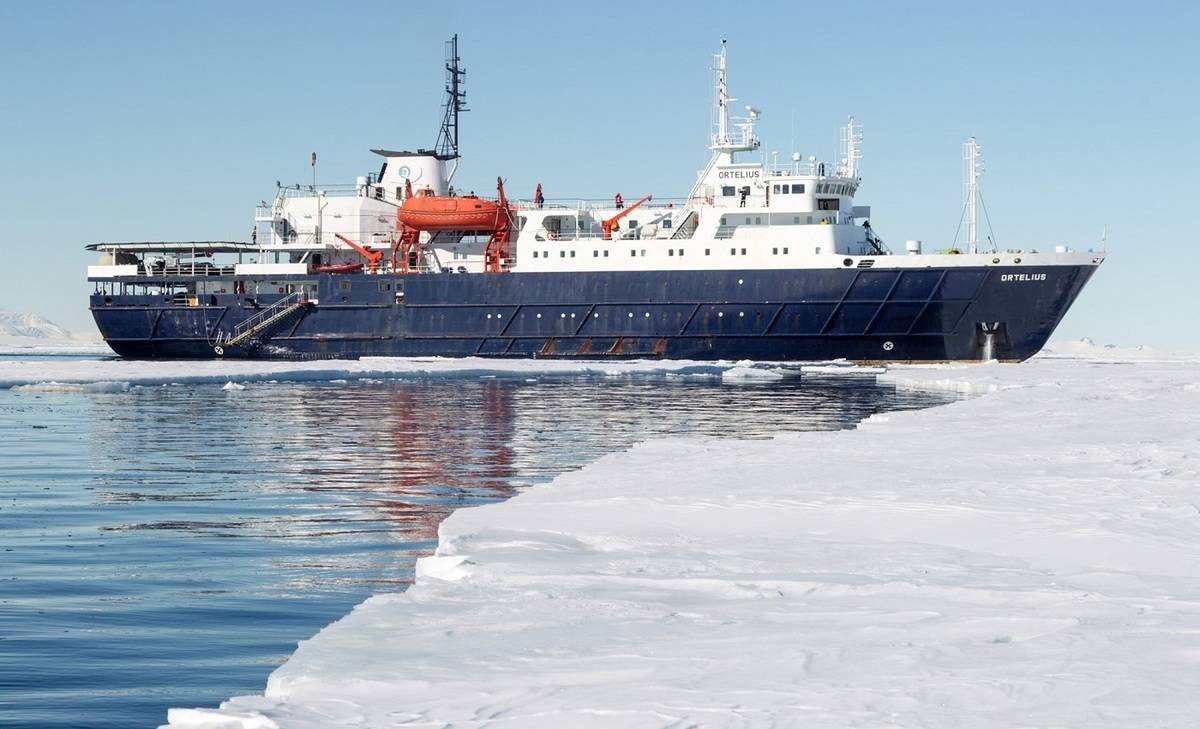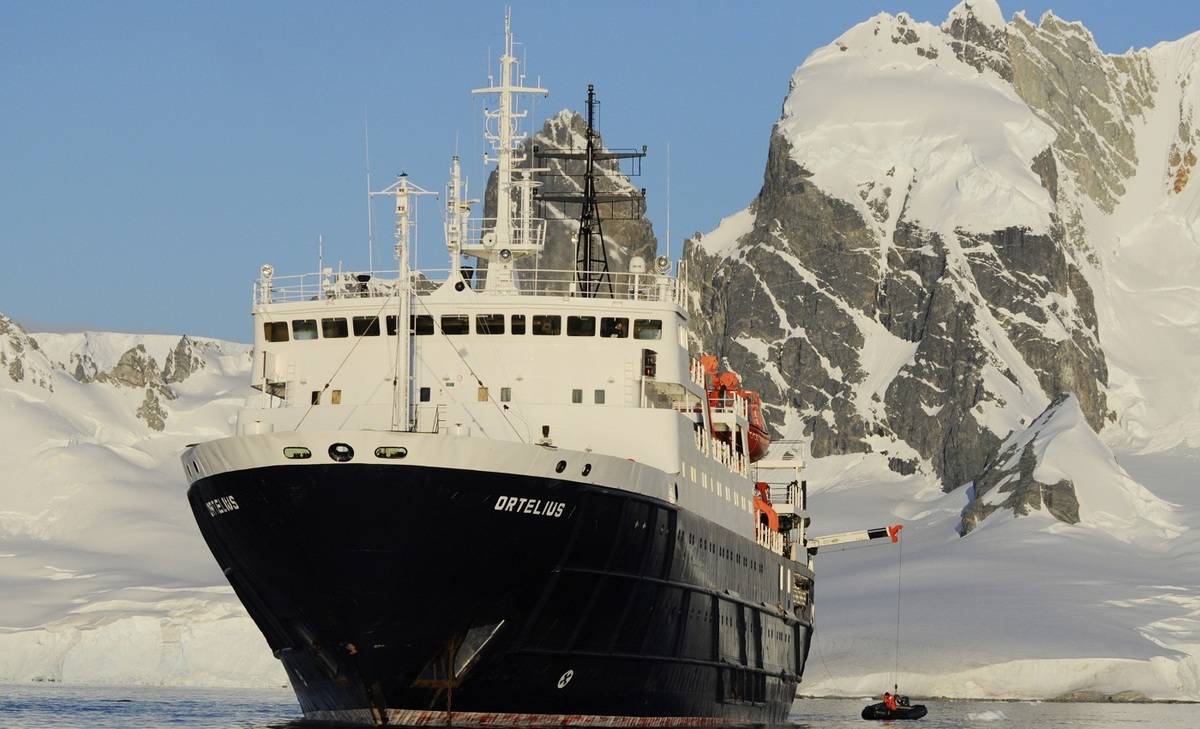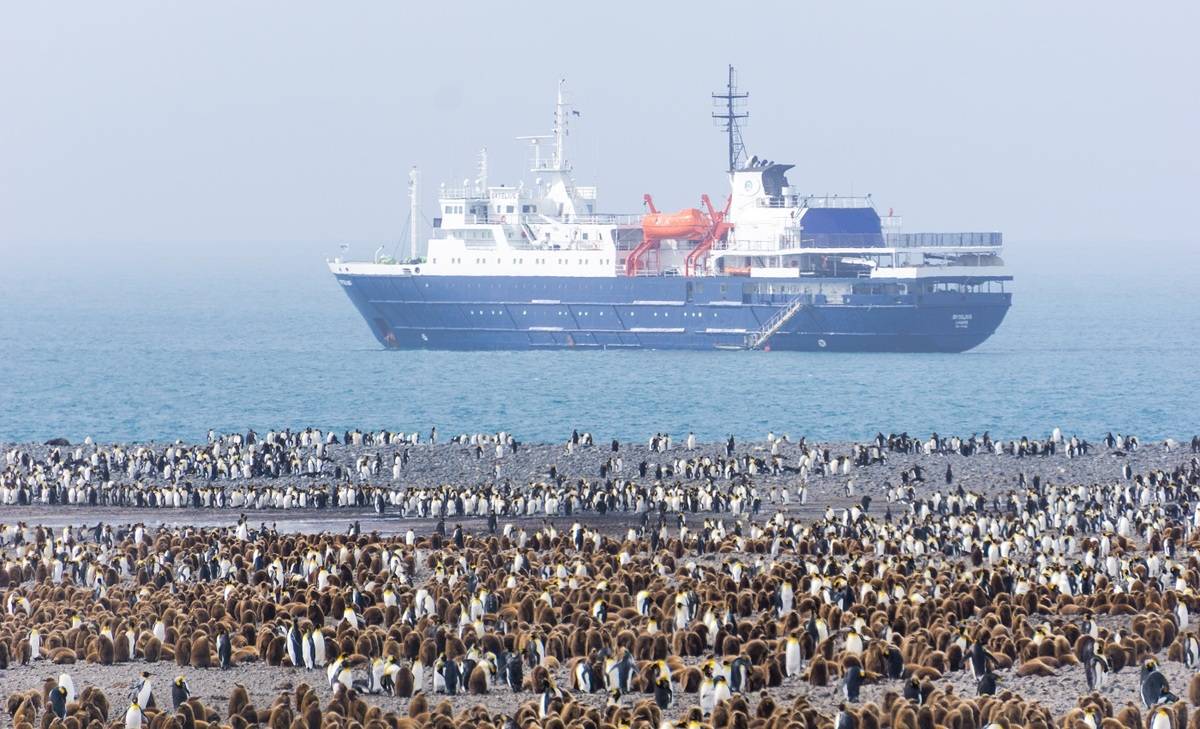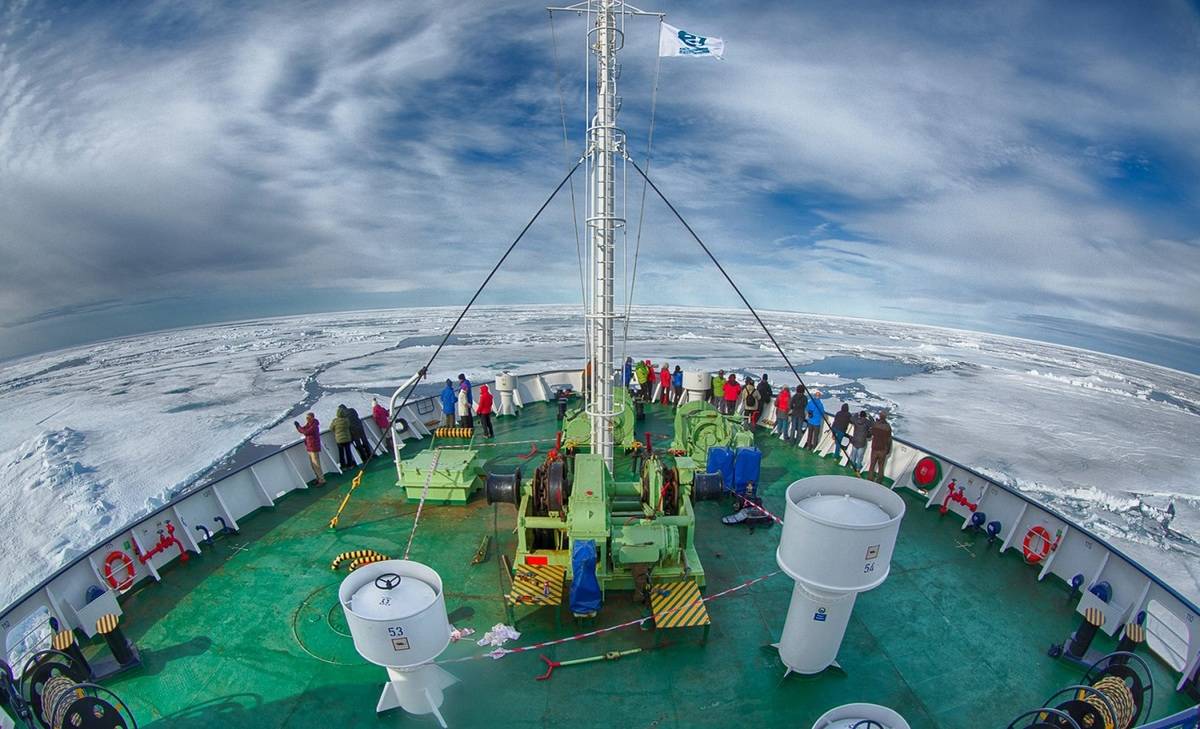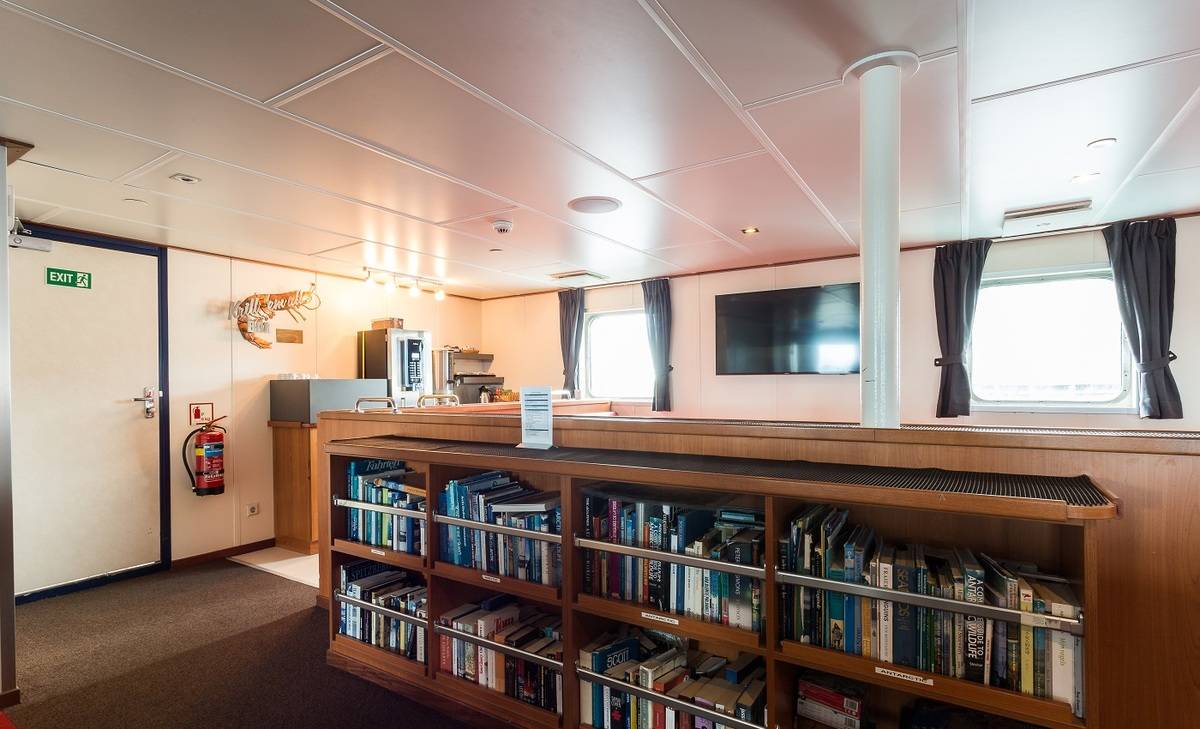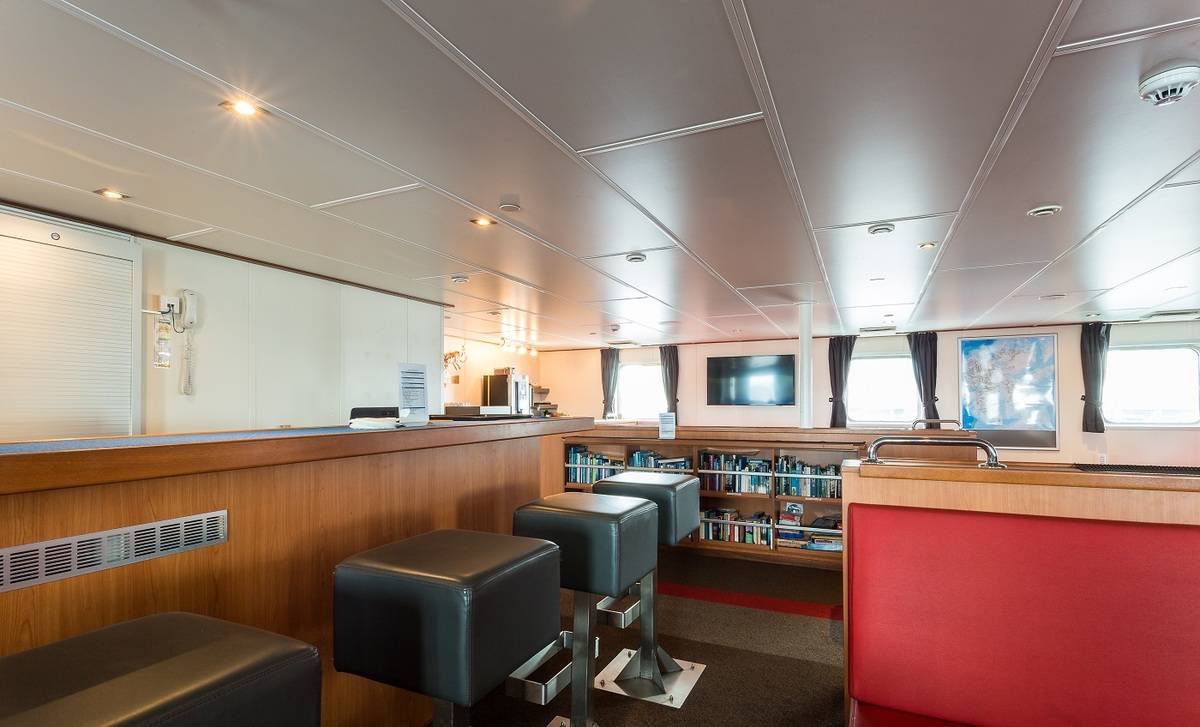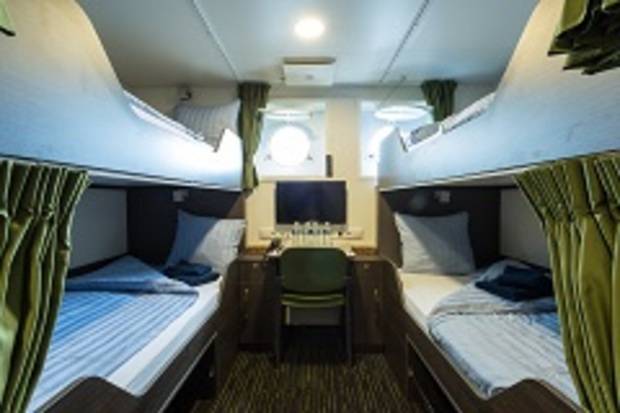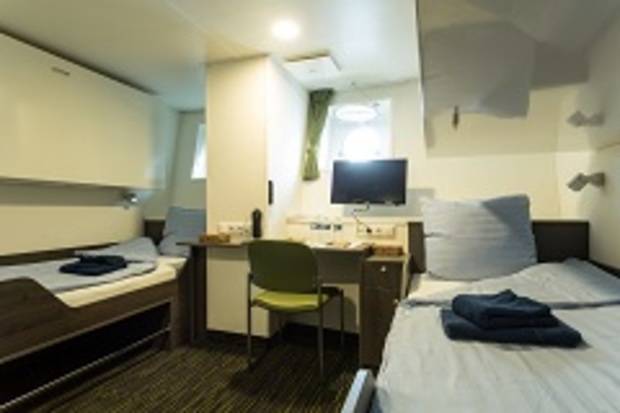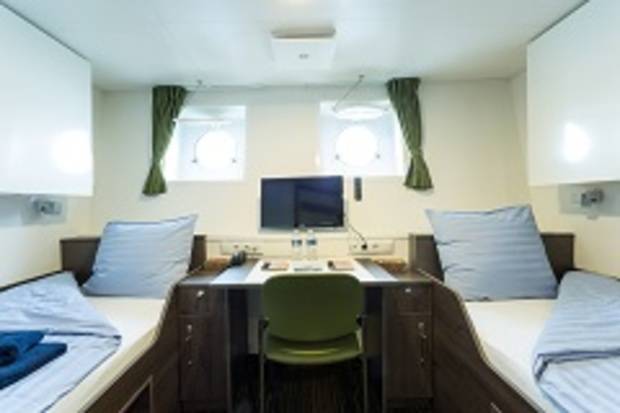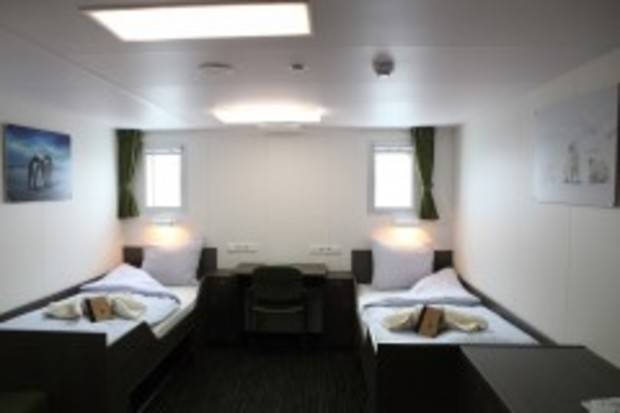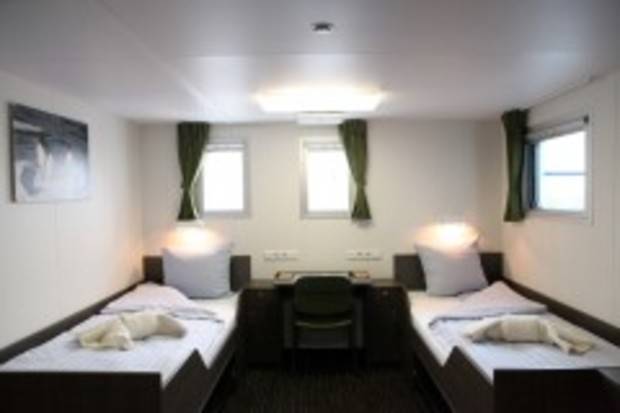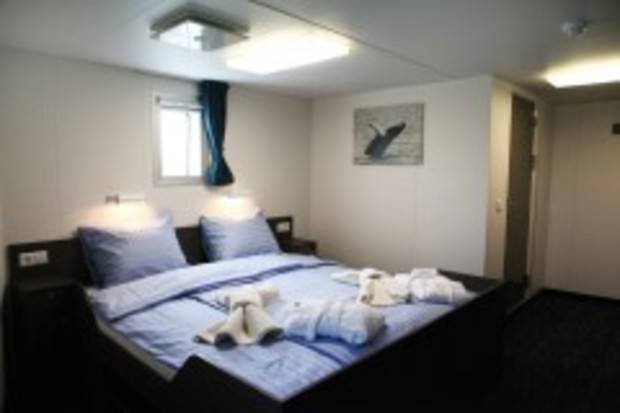Around Spitsbergen - In the Realm of Polar Bear & Ice
10 Days - Ortelius
Step aboard the M/V Oretlius on this comprehensive 10-day cruise around Spitsbergen and the icy waters of the North Atlantic. Keep an eye out for the various wildlife that call this piece of the world home including whales, reindeer, Arctic foxes, walrus, seals and the star of the show, the polar bear.

Home » M/V Ortelius: Around Spitsbergen – In the Realm of Polar Bear & Ice
Itinerary Highlights
- Circumnavigate Spitsbergen
- Cruise by the towering blue-what face of the Fourteenth of July Glacier
- Sail to Ny Alesund, the northernmost settlement on Earth
- Weather permitting, cruise within sight of the 5km long Monaco Glacier
- Search for wildlife including whales, Arctic fox, reindeer and polar bear
Itinerary in Brief
- Day 1: Longyearbyen and embarkation in Isfjorden
- Day 2: Cruising Krossfjorden
- Day 3: The massive Monaco Glacier
- Days 4-5: Stop at the Seven Islands
- Day 6: Highlights of Hinlopen
- Day 7: Barentsoya's Many Bounties
- Day 8: Land of the Pointed Mountains
- Day 9: Bell Sund's Flora, Fauna and Haunting HIstory
- Day 10: Return to Longyearbyen
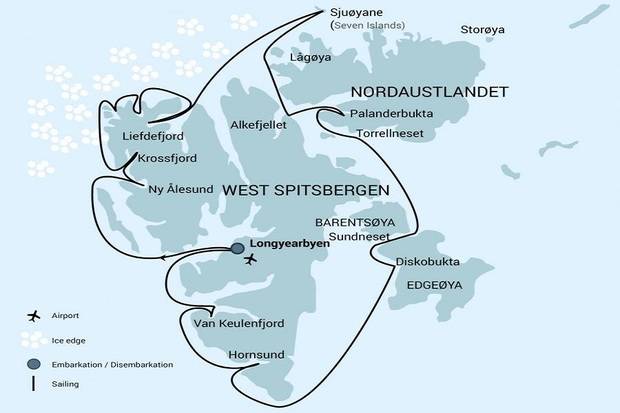
Day 1: Longyearbyen and Embarkation in Isfjorden
You touch down in Longyearbyen, the administrative center of Spitsbergen, the largest island of the Svalbard archipelago. Enjoy strolling around this former mining town, whose parish church and Svalbard Museum make for fascinating attractions. Though the countryside appears stark, more than a hundred species of plant have been recorded in it. In the early evening the ship sails out of Isfjorden, where you might spot the first minke whale of your voyage.
Day 2: Cruising Krossfjorden
Heading north along the west coast, you arrive by morning in Krossfjorden. Here you might board the Zodiacs for a cruise near the towering blue-white face of the Fourteenth of July Glacier. On the green slopes near the glacier, colorful flowers bloom while flocks of kittiwakes and Brünnich’s guillemots nest on the cliffs. You have a good chance of spotting an Arctic fox scouting for fallen chicks, or a bearded seal paddling through the fjord.
In the afternoon you sail to Ny Ålesund, the northernmost settlement on Earth. Once a mining village served by the world’s most northerly railway – you can still see its tracks – Ny Ålesund is now a research center. Close to the community is a breeding ground for barnacle geese, pink-footed geese, and Arctic terns. And if you’re interested in the history of Arctic exploration, visit the anchoring mast used by polar explorers Amundsen and Nobile in their airships, Norge (1926) and Italia (1928).
Day 3: Monaco Glacier
Depending on the weather, you could sail into Liefdefjorden and cruise within sight of the 5-kilometer-long (3.1 miles) face of the precipitous Monaco Glacier. The waters in front of this glacier are a favorite feeding spot for thousands of kittiwakes, and the base of the ice is a popular polar bear hunting ground. If ice conditions prevent sailing here early in the season, an alternate route along the west coast of Spitsbergen can be implemented.
Days 4-5: Stop at the Seven Islands
The northernmost point of your voyage may be north of Nordaustlandet, in the Seven Islands. Here you reach 80° north, just 870 km (540 miles) from the geographic North Pole. Polar bears inhabit this region, so the ship may park for several hours among the pack ice before wheeling around west again.
When the edge of this sea ice is tens of miles north of the Seven Islands (mostly in August), you can spend a second day in this area. Alternatively (mostly in July) you may turn to Sorgfjord, where you have the chance to find a herd of walruses not far from the graves of 17th-century whalers. A nature walk here can bring you close to families of ptarmigans, and the opposite side of the fjord is also a beautiful area for an excursion.
Day 6: Highlights of Hinlopen
Today you sail into Hinlopen Strait, home to bearded and ringed seals as well as polar bears. At the entrance there is even the possibility to spot blue whales. As with Liefdefjorden, you can take an alternate west Spitsbergen route if ice prevents entry into Hinlopen. After cruising among the ice floes of Lomfjordshalvøya in the Zodiacs, you then view the bird cliffs of Alkefjellet with their thousands of Brünnich’s guillemots. On the east side of Hinlopen Strait, you may attempt a landing where reindeer, pink-footed geese, and walruses are likely sights. Near Torrelneset you can also visit the polar desert of Nordaustlandet, next to the world’s third-largest ice cap. Here you may encounter walruses during a coastline hike over the area’s raised beaches.
Day 7: Barentsoya's Many Bounties
The plan is to make landings in Freemansundet, though polar bears sometimes make this impossible. Potential stops on Barentsøya include Sundneset (for an old trapper’s hut), Kapp Waldburg (for its kittiwake colony), and Rindedalen (for a walk across the tundra). You might also cruise south to Diskobukta, though Kapp Lee is more likely your destination. On Kapp Lee is a walrus haul-out, Pomor ruins, and the chance for hikes along Edgeøya.
Day 8: Land of the Pointed Mountains
You start the day by cruising the side fjords of the Hornsund area of southern Spitsbergen, taking in the spire-like peaks: Hornsundtind rises 1,431 meters (4,695 feet), and Bautaen is a perfect illustration of why early Dutch explorers named this island Spitsbergen, meaning “pointed mountains.” There are 14 sizable glaciers in this area as well as opportunities for spotting seals, beluga whales, and polar bears.
Day 9: Bell Sund's Flora, Fauna & Haunting History
Today you find yourself in Bell Sund, one of the largest fjord systems in Svalbard. The ocean currents make this area slightly warmer than other areas in the archipelago, which shows in the relatively lush vegetation. Here there are excellent opportunities to enjoy both history and wildlife. A possibility is Ahlstrandhalvøya, at the mouth of Van Keulenfjorden, where piles of beluga skeletons can be found. These remains of 19th-century whale slaughter are a haunting reminder of the consequences of rampant exploitation. Fortunately, belugas were not hunted into extinction, and you have a good chance of coming across a pod. Alternately, while cruising the side fjords of Bellsund, you can explore tundra where reindeer like to feed as well as rock slopes where little auks are breeding.
Day 10: Return to Longyearbyen
Every adventure, no matter how grand, must eventually come to an end. You disembark in Longyearbyen, taking home memories that will accompany you wherever your next adventure lies.
Cabin Details
Quadruple Porthole Cabin
Located on deck 3; two porthole windows, 2 upper and 2 lower berths, private shower and toilet, desk and chair, hair dryer and ample storage space.
Triple Porthole Cabin
Located on Deck 3; two portholes, 1 upper and 2 lower berths, private shower and toilet, desk and chair, hair dryer and ample storage space.
Twin Porthole Cabin
Located on Deck 3 and on Deck 4; two porthole windows, private toilet and shower, two single lower berths, desk and chair, hair dryer and ample storage space. Cabins on deck 4 are quieter than cabins on deck 3: farther away from the noise of engines and generators. Access to the forward observation deck.
Twin Window Cabin
Three windows; 2 lower berths; Private shower & toilet; Desk & chair; Flatscreen TV; Telephone & WiFi (supplemented); Hair dryer; Ample storage space
Twin Deluxe Cabin
Located on Deck 5; three windows; 2 lower berths; Private shower & toilet; Desk & chair; Small sofa; Refrigerator; Coffee & tea maker; Flatscreen TV; Telephone & WiFi (supplemented); Hair dryer; Ample storage space
Superior Cabin
Located on Deck 5; two windows minimum, one double bed, one single (sofa) bed, private toilet and shower, desk and chair, flat screen TV, refrigerator, hairdryer, coffee & tea maker, ample storage space. The quietest cabin deck and has the best access to upper observation decks and the ship's bridge.
Ortelius Deckplan
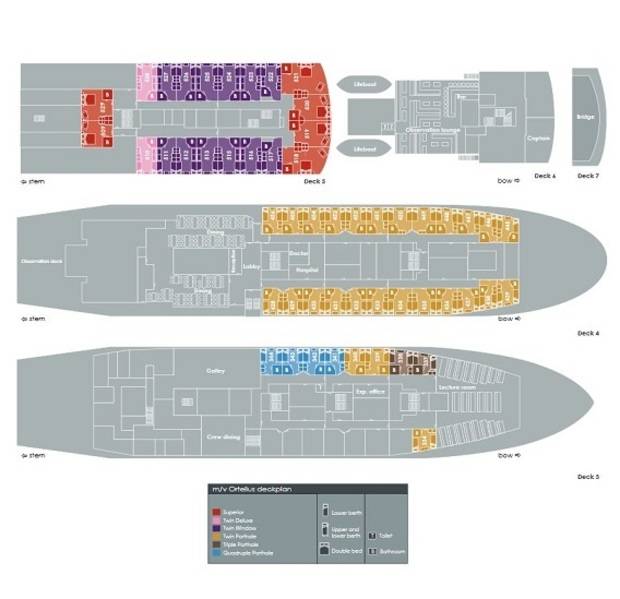
Specifications
- Passengers: 116-123 in 53 cabins
- Staff & crew: 52
- Length: 90.95 meters
- Breadth: 17.20 meters
- Draft: 5.4 meters
- Ice class: UL1 (Equivalent to 1A)
- Displacement: 4090 tonnes
- Propulsion: 6 ZL 40/48 SULZER
- Speed: 10.5 knots average cruising speed
- Year built: 1989
Whats included?
- Voyage aboard the M/V Ortelius.
- All meals throughout the voyage aboard the ship including snacks, coffee and tea.
- All shore excursions and activities throughout the voyage by Zodiac.
- Program of lectures by noted naturalists and leadership by experienced expedition staff.
- Free use of rubber boots and snowshoes.
- Transfers and baggage handling between the airport, hotels and ship only for those passengers on the group flights to and from Longyearbyen.
- All miscellaneous service taxes and port charges throughout the programme.
- AECO fees and governmental taxes.
- Comprehensive pre-departure material.
What’s not included?
- Any airfare, whether on scheduled or charter flights
- Pre- and post- land arrangements.
- Transfers to / from the vessel outside Spitsbergen.
- Passport and visa expenses.
- Government arrival and departure taxes.
- Meals ashore.
- Baggage, cancellation and personal insurance (which is mandatory).
- Excess baggage charges and all items of a personal nature such as laundry, bar, beverage charges and telecommunication charges.
- The customary gratuity at the end of the voyages for stewards and other service personnel aboard (guidelines will be provided).
Notes
PLEASE NOTE: N.B. The chances that we can complete a full Spitsbergen circumnavigation (based on our experiences from 1992 – 2019) are about 30% in the first half of July, 70% in the second half, 90% in the first half of August, and 95% in the second half. In case we cannot complete a full circumnavigation, we may devise a program in northeast or southeast Spitsbergen. All itineraries are for guidance only. Programs may vary depending on local ice and weather conditions and in order to take advantage of opportunities to see wildlife. The on-board expedition leader determines the final itinerary. Itineraries may mention places that require permission to land, which must be granted by the relevant national authorities. Such permission is not granted prior to the publishing of these itineraries. Flexibility is paramount for expedition cruises. The average cruising speed for m/v Ortelius is 10.5 knots.

